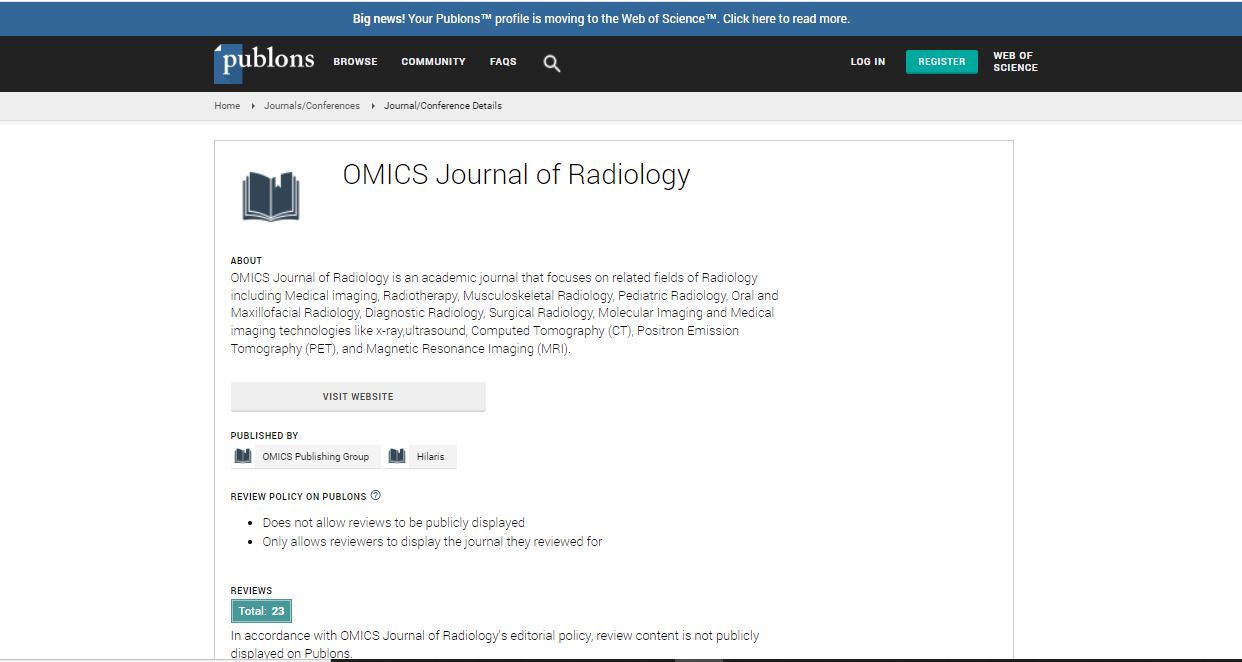Our Group organises 3000+ Global Conferenceseries Events every year across USA, Europe & Asia with support from 1000 more scientific Societies and Publishes 700+ Open Access Journals which contains over 50000 eminent personalities, reputed scientists as editorial board members.
Open Access Journals gaining more Readers and Citations
700 Journals and 15,000,000 Readers Each Journal is getting 25,000+ Readers
Google Scholar citation report
Citations : 551
Journal of Radiology received 551 citations as per Google Scholar report
Journal of Radiology peer review process verified at publons
Indexed In
- Index Copernicus
- Google Scholar
- Open J Gate
- Genamics JournalSeek
- ResearchBible
- Electronic Journals Library
- RefSeek
- Hamdard University
- EBSCO A-Z
- OCLC- WorldCat
- SWB online catalog
- Virtual Library of Biology (vifabio)
- Publons
- Geneva Foundation for Medical Education and Research
- ICMJE
Useful Links
Share This Page
Detection and clinical significance of sternal lesions on breast MRI
International Conference on Medical Imaging & Diagnosis
Limin Yang
University of Iowa, USA
ScientificTracks Abstracts: OMICS J Radiol
Abstract
The purpose of this study is to characterize sternal lesions detected on breast MRI, compare MRI detection of sternal lesions with other imaging modalities (bone scan, PET/CT and chest CT), and ascertain how often patient management is altered by discovery of sternal lesions. Retrospective review of 1143 breast MRIs between 2007 and 2012 identified 17 patients with sternal lesions including 15 patients with newly diagnosed breast cancer and 2 patients with remote history of breast cancer. Tumor size, histopathology, receptor status, nodal and distant metastasis, and images of breast MRI and other modalities were reviewed. Sternal lesions in 9 of the 17 patients were determined to be malignant (metastasis) either by biopsy or presence of widespread metastases. Sternal lesions in 8 of the 17 were benign, confirmed by biopsy or presumed benign as not detected by other modalities. The malignant group had statistically significant larger breast cancer size (malignant: 6.4 cm; benign: 2.3 cm), a higher percentage of diffuse sternal lesions (malignant: 56%; benign: 0%), and more frequently showed rapid initial enhancing (malignant: 100%; benign: 63%) and delayed washout curves (malignant: 67%; benign: 13%). Although not statistically significant, the malignant group had a higher frequency of invasive lobular carcinoma (malignant: 44%; benign: 13%) and more lymph node involvement (malignant: 78%; benign: 50%). Breast MRI detected more sternal lesions than did bone scan, PET/CT and chest CT. Four of the 17 (24%) patients were upgraded to stage 4 due to unsuspected metastatic sternal lesions on breast MRI. In conclusion, breast MRI is more sensitive than other modalities in detecting sternal lesions. Sternal metastases occur more frequently in aggressive breast cancer and exhibit malignant-type dynamics on breast MRI. Detection of unsuspected sternal metastasis alters staging and improves patient management with more appropriate treatment.Biography
Limin Yang has completed her MD from Peking University Health Science Center, PhD and Post-doctoral training from The University of Texas Health Science Center at San Antonio. She completed her Radiology Residency and Breast Imaging Fellowship from The University of Iowa. She is a Clinical Associate Professor in the Department of Radiology, The University of Iowa and the Medical Director of Breast Imaging at The University of Iowa Hospitals and Clinics. She has published more than 20 papers in reputed journals and has been serving as an Editorial Board Member of Journal of Medical Diagnostic Methods and is reviewer for several reputed journals.
Email: limin-yang@uiowa.edu

 Spanish
Spanish  Chinese
Chinese  Russian
Russian  German
German  French
French  Japanese
Japanese  Portuguese
Portuguese  Hindi
Hindi 
